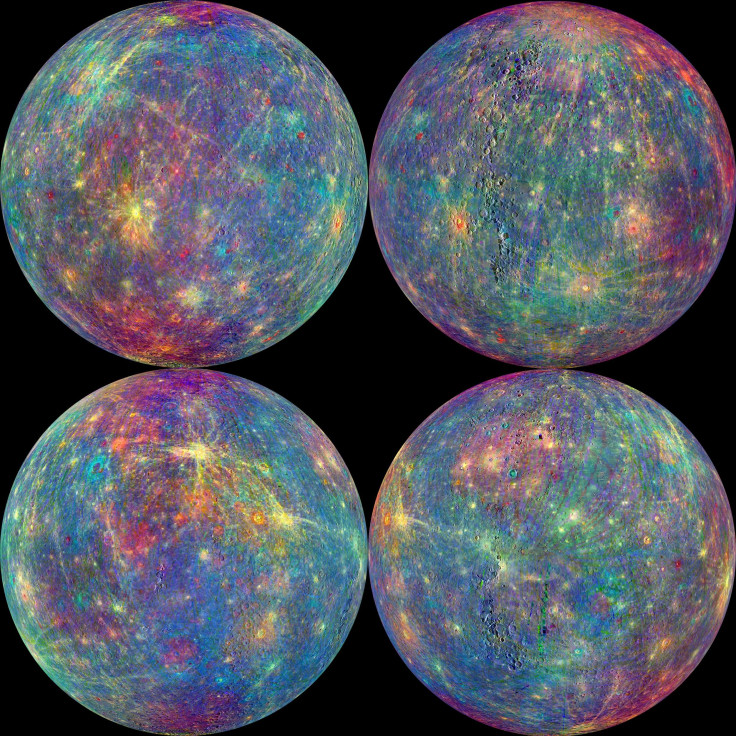Mercury Weather: Morning Micro-Meteor Showers That Change Its Thin Atmosphere

When it comes to unusual weather phenomena, some planets don’t really need climate change to make things interesting. Take Mercury, for instance, which is bombarded every dawn with small fragments of extinct comets, whose impact also affects its barely-existent atmosphere.
Mercury’s atmosphere is so thin, in fact, that it is called an exosphere. On Earth, it is only one of the layers of the atmosphere — the outermost layer, where the atmosphere thins out before merging with outer space. And recent research, using data from a NASA spacecraft, has shown the exosphere of the first rock from the sun could be affected by dust particles that slam into it during dawn.
NASA’s Mercury Surface, Space Environment, Geochemistry and Ranging (MESSENGER) mission observed the planet from 2011 to 2015 and found that two types of comets are largely responsible for the tiny dust particles — called micrometeoroids — that rain down on Mercury at whatever side of the planet is experiencing dawn.
This conclusion about the micrometeoroids’ apparent preference for dawn was based on the higher concentration of magnesium and calcium found in Mercury’s exosphere during the early morning.
It is probably worth knowing that dawn on Mercury last several Earth days. The planet closest to the sun has a strange cycle of rotation and revolution, taking 58 Earth days to complete one rotation on its own axis, and 88 Earth days to circle the sun. Effectively (after taking into account the planet’s elliptical orbit), one day on Mercury lasts two Mercury years. To understand this conundrum better, if you want, visit this website.
This unusual aspect of Mercury’s orbit creates an asymmetry between the dawn and dusk sides of the planet, especially when combined with the fact that many meteoroids in the solar system travel in the direction opposite to that of the planets.
“The part of the planet at dawn spends a disproportionately long time in the path of one of the solar system’s primary populations of micrometeoroids. This population, called retrograde meteoroids, orbits the Sun in the direction opposite the planets and comprises pieces from disintegrated long-period comets. These retrograde meteoroids are traveling against the flow of planetary traffic in our solar system, so their collisions with planets — Mercury, in this case — hit much harder than if they were traveling in the same direction,” a NASA statement Friday explained.
A lot of this information was the result of a paper published in June this year in the Astrophysical Journal Letters by NASA researchers Petr Pokorný, Menelaos Sarantos and Diego Janches, all from the space agency’s Goddard Space Flight Center in Greenbelt, Maryland.
“Observations by MESSENGER indicated that dust must predominantly arrive at Mercury from specific directions, so we set out to prove this with models. We simulated meteoroids in the solar system, particularly those originating from comets, and let them evolve over time,” Pokorný said in the statement.
The two types of comets that these micrometeoroids are likely to be from are Jupiter-family comets and Halley-type comets. The former, named after the influence that gravity from our solar system’s largest planet has on them, are thought to emerge from the Kuiper Belt where Pluto is. Their orbital period around the sun is relatively short, of under 20 years. In contrast, the Halley-type comets have orbits that last more than 200 years. These objects are thought to originate in the farthest reaches of our solar system, an area called the Oort Cloud that is over 1,000 times more distant from the sun than Earth.
© Copyright IBTimes 2024. All rights reserved.





















